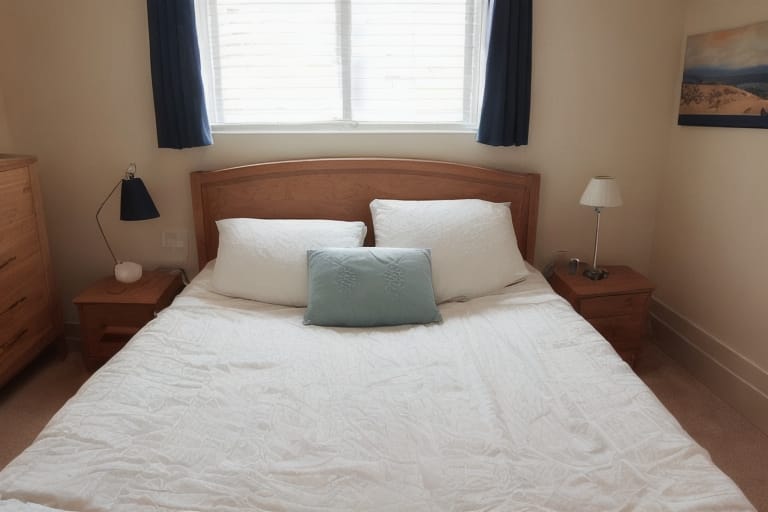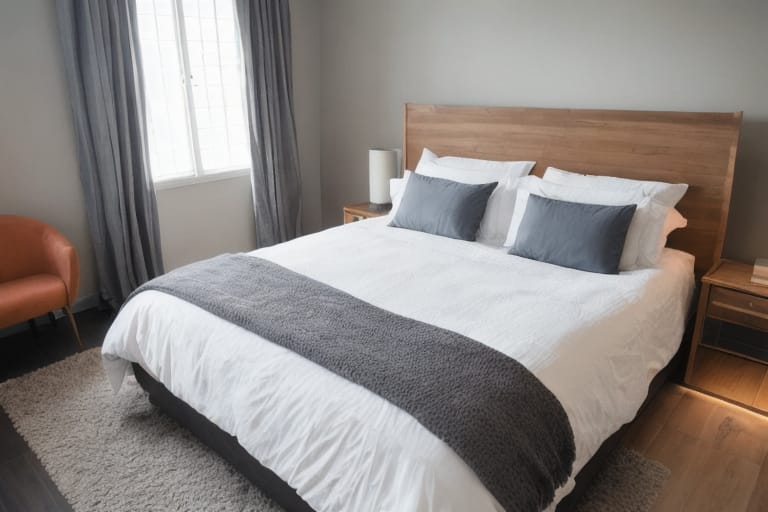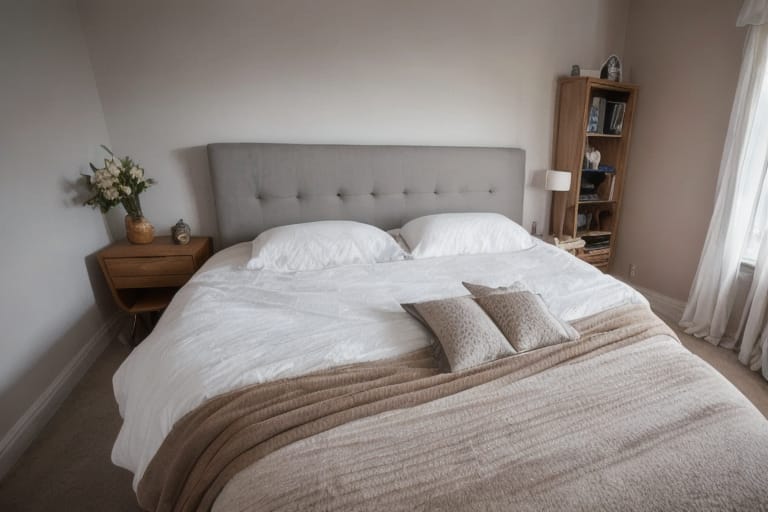When it comes to keeping warm on cold winter nights, down comforters are in a league of their own. But what exactly makes them so much more insulating and cozy than other types of comforters and blankets?
In this beginner’s guide, we’ll explore the unique properties of goose down and duck down fill that enable down comforters to trap body heat extremely effectively. We’ll also discuss how fill power, fill weight, and other factors impact warmth.
Whether you’re looking to buy your first down comforter or just want to understand what makes them the ultimate in lightweight warmth, read on to have all your questions answered!
What is Down and Where Does it Come From?
Before understanding why down is such an exceptional natural insulator, it’s important to know exactly what it is.
- Down refers to the layer of fine, fluffy feathers located underneath the tougher exterior feathers of ducks and geese. It’s what keeps birds warm by trapping air close to their bodies.
- Goose and duck down is harvested as a by-product from birds used in the food industry. Most comes from China and European countries like Hungary, Poland and Russia.
- Ethical down is sourced using humane methods after the birds have been processed for meat. Certifications like the Responsible Down Standard ensure animal welfare practices.
The Unique Structure of Down Makes it Perfect for Insulation
Down has an exceptional ability to trap body heat thanks to its unique structural properties:
- Down clusters have a three-dimensional structure, with tiny fibers branching off a central quill point. This creates a lot of open space to trap air.
- The fluffy filaments are also extremely soft, lightweight and breathable.
- Together, this allows the down to loft up and creates thousands of tiny air pockets that slow down heat transfer.
This gives down the highest insulating value per ounce of any natural or synthetic insulator available.
That’s why high-quality down can provide incredible warmth despite being very lightweight and comfortable, unlike bulky fabrics like wool.
Factors That Impact Down Comforter Warmth
While all down comforters provide some level of insulation, there can be big differences in exactly how warm they keep you.
The amount of insulation and warmth is influenced by three key attributes of the down fill:
- Fill power – The loft and fluffiness
- Fill weight – The density and amount of down clusters
- Down proofness of the shell fabric
Let’s look at how each impacts warmth:
Fill Power and Loft
Higher fill powers like 700, 800 or 900+ indicate finer, fluffier down filaments that can trap more air. This provides more insulation with less weight.
The accompanying chart shows how increasing fill power improves both warmth and lightweight comfort.
| Fill Power | Insulating Ability | Weight for Warmth | Loft |
|---|---|---|---|
| 400 | Poor | Heavy | Low |
| 600 | Good | Moderate | Medium |
| 800+ | Excellent | Lightweight | High |
Fill Weight
This measures the density and ounces of down in the comforter. More down by weight means more trapped air pockets.
For a given fill power, higher fill weights indicate more down overall, boosting warmth. This allows striking the right balance between insulation and weight.
Downproofness
Downproof shell fabrics have a tighter weave so clusters can’t poke through. This keeps the down evenly distributed inside instead of shifting around.
Non-downproof comforters lose insulation value quicker as the fill clumps and moves around. Checking for downproofness protects long term warmth.
Comparing Down vs Synthetic Insulation
While nothing beats the natural warmth of high-fill power goose down, there are some benefits for synthetic options:
Synthetic Pros
- Cheaper upfront cost
- Hypoallergenic and vegan
- Better maintains loft when wet
Down Pros
- Much higher warmth per ounce
- Soft, lightweight comfort
- Long-lasting with proper care
- Biodegradable and renewable
So while down alternatives like Primaloft are improving, a quality down comforter still provides the ultimate in lightweight insulating power and durace if cared for properly.

Choosing the Fill Power and Warmth Level
The three key factors of fill power, fill weight and fabric downproofness together determine the insulation value and warmth.
Many comforters now provide convenient warmth level guidelines based on seasonality and sleeper preferences.
Warmth Ratings
- Light Warmth – For summer, hot sleepers
- All-season warmth – Versatile for most people, climates
- Ultra warmth – For very cold climates and frigid bedrooms
Within each level can be variation. For example, ultra-warm comforters range from having high fill weights of light 600 fill down, up to low fill weights of 900+ fill power.
The important aspects are finding the right insulation value and weight based on your climate and sleeping preferences.
Other Features Enhancing Down Comforter Warmth
While high-quality, ethically sourced down is the ultimate driver of insulation, new technologies also enhance natural warmth:
Baffle Box Construction
This keeps the fill evenly distributed instead of shifting around. That guarantees long-lasting comfort and warmth.
Dual Warmth Zones
Having extra insulation at the top and less on the sides allows tailoring warmth where you need it.
Innovative Fabric Technology
Some down comforters now feature Celliant threads. These convert body heat to infrared energy for improved circulation and warmth.
Maintaining Down Comforter Performance
To enjoy consistent comfort and warmth over time, proper maintenance is key:
- Fluffing – Regularly fluffing restores loft lost through compression
- Dry Clean using non-chlorine cleansers every 2-3 years
- Proper Storage – Store uncompressed in breathable bags
With the right care, quality down comforters can last over 10 years, saving money compared to buying cheaper versions every few years.
Finding the Best Value Down Comforter
Focus on getting the highest quality, ethically sourced down you can afford upfront instead of going cheap.
Check for trusted brands with Downmark or Responsible Down Standard (RDS) certifications. This ensures humane harvesting methods and down purity claims.
Wrapping Up
So in summary, down comforters provide exceptional lightweight warmth thanks to:
- The unique three dimensional structure efficiently trapping body heat.
- Ultra-soft, breathable filaments adaptable to ambient temperatures
- High fill power and fill weights maximizing trapped air pockets
Combine these properties with innovative fabric technology like Celliant, and down comforters set the gold standard for comfort and insulation compared to wool, cotton or synthetics.
Now that you know to look for fill power, ethical sourcing certifications, and care guidance, you can invest confidently in the ultimate warmth comforter built to last 8-10 years or longer.
Your cozy nights are covered.

Frequency Asked Questions
Q1: Is goose down or duck down better for warmth?
Goose down is considered superior for trapping heat. The clusters and filaments of geese are larger which increases loft for trapping air. Geese are also larger birds overall with more down per ounce harvested. This leads to higher fill weights and insulation value per weight.
Duck down comforters can still provide good affordability and warmth, but goose down will be warmer with the same fill power and fill weight specifications.
Q2: How do I know if a comforter will be warm enough?
Check the warmth ratings like “Ultra Warm Winter Use” and details for the fill power and fill weight ounces. Higher fill power down with heavier fill weights will provide more insulation.
You can also look at TOG ratings (Thermal Overall Grade). The higher the TOG, the warmer the down comforter.
Q3: What’s the difference between a comforter and a duvet?
A comforter is a complete bedding piece with the outer shell fabric sewn together over the down fill. With a duvet, the down insert fits inside a removable duvet cover.
Comforters tend to be lighter and less expensive. Duvets allow changing covers but need purchasing the insert and cover separately. The duvet insert down fill itself provides the warmth either way.
Q4: How do I clean a down comforter or duvet?
It’s recommended to dry clean down comforters every 2-3 years to restore lost loft and keep the down sanitary. Look for “Down Clean” specialty laundering to properly wash and dry without damaging delicate clusters.
Some companies also offer restoration services beyond cleaning to maximize loft and longevity. Between cleanings air out comforters rather than washing to revitalize insulation.
Q5: Does responsibly sourced down make a difference?
Absolutely! Opting for third party certifications like the Responsible Down Standard or Downpass ensures humane treatment without live-plucking or force-feeding methods. This audits animal welfare through the entire supply chain.








